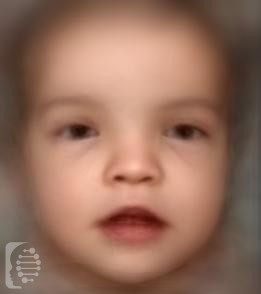What is Acrocallosal syndrome (ACLS)?
The acrocallosal syndrome is a rare genetic condition that was first identified in 1970 by Dr. Schnizel. Since then there have been just 25 cases diagnosed worldwide to date.
It is a syndrome that affects the development of the brain, and intellectual disability is a defining feature of it.
The syndrome is an inherited condition and due to the severity of its symptoms, it is usually identified at birth.
This syndrome is also known as:
ACS Hallux Duplication; Postaxial Polydactyly; And Absence Of Corpus Callosum Schinzel Acrocallosal Syndrome; Schinzel syndrome
What gene change causes Acrocallosal syndrome (ACLS)?
The syndrome is caused by mutations in the KIF7 gene. It is inherited in an autosomal recessive pattern.
Autosomal recessive inheritance means an affected individual receives one copy of a mutated gene from each of their parents. Parents, who carry only one copy of the gene mutation will not generally show any symptoms but have a 25% chance of passing the copies of the gene mutations onto each of their children.
What are the main symptoms of Acrocallosal syndrome (ACLS)?
The syndrome affects the development of the thick bank of nerve fibers that join the two hemispheres of the brain. This leads to moderate to severe intellectual disability in affected individuals.
Symptoms may vary considerably between individuals including individuals within the same family. However, they are usually obvious enough in all affected individuals for the syndrome to be identified at birth.
Features related to the syndrome mainly affect the skull and face. These include a very large head and forehead. Widely spaced eyes, a small nose, and a broad bridge.
Webbing of the fingers or toes, or missing fingers and toes is also common. As is a short stature.
Possible clinical traits/features:
Phenotypic variability, Frontal bossing, Prominent forehead, Short philtrum, Macrocephaly, Strabismus, Pulmonary valve defects, Heterogeneous, Umbilical hernia, Preaxial foot polydactyly, Open mouth, Sensorineural hearing impairment, Optic atrophy, Nystagmus, Rectovaginal fistula, Triangular mouth, Thin vermilion border, Wide anterior fontanel, Preaxial hand polydactyly, Seizure, Postaxial foot polydactyly, Posteriorly rotated ears, Postaxial hand polydactyly, Preauricular skin tag, Toe syndactyly, Duplication of thumb phalanx, Duplication of phalanx of hallux, Aplasia/Hypoplasia of the corpus callosum, Aplasia/Hypoplasia of the cerebellum, Anal atresia, Triphalangeal thumb, Abnormality of the fontanelles or cranial sutures, Abnormality of the clavicle, Abnormal cardiac septum morphology, Cleft palate, Abnormality of the pinna, Wide nasal bridge, Hypertelorism, Hypoplasia of teeth, Hypopigmentation of the fundus, Generalized hypotonia.
How is it diagnosed?
To find out if someone has a diagnosis of Acrocallosal syndrome, it is important to have a consultation and evaluation with a clinical genetic specialist. Specialists may also suggest specific genetic testing or other types of tests to help reach a diagnosis. FDNA’s AI technology can help speed up the diagnostic process by analyzing facial features and other health information.

